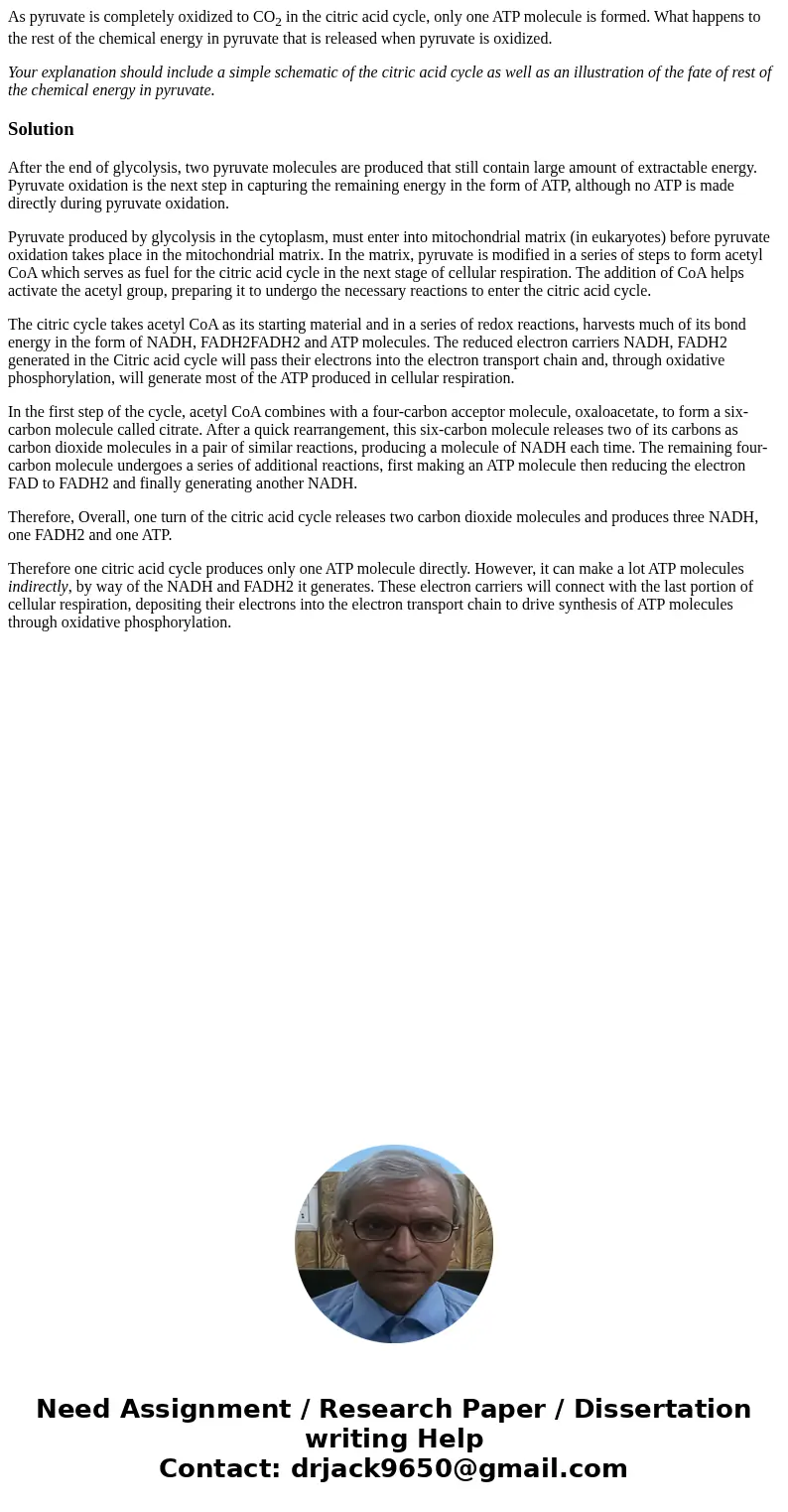As pyruvate is completely oxidized to CO2 in the citric acid
As pyruvate is completely oxidized to CO2 in the citric acid cycle, only one ATP molecule is formed. What happens to the rest of the chemical energy in pyruvate that is released when pyruvate is oxidized.
Your explanation should include a simple schematic of the citric acid cycle as well as an illustration of the fate of rest of the chemical energy in pyruvate.
Solution
After the end of glycolysis, two pyruvate molecules are produced that still contain large amount of extractable energy. Pyruvate oxidation is the next step in capturing the remaining energy in the form of ATP, although no ATP is made directly during pyruvate oxidation.
Pyruvate produced by glycolysis in the cytoplasm, must enter into mitochondrial matrix (in eukaryotes) before pyruvate oxidation takes place in the mitochondrial matrix. In the matrix, pyruvate is modified in a series of steps to form acetyl CoA which serves as fuel for the citric acid cycle in the next stage of cellular respiration. The addition of CoA helps activate the acetyl group, preparing it to undergo the necessary reactions to enter the citric acid cycle.
The citric cycle takes acetyl CoA as its starting material and in a series of redox reactions, harvests much of its bond energy in the form of NADH, FADH2FADH2 and ATP molecules. The reduced electron carriers NADH, FADH2 generated in the Citric acid cycle will pass their electrons into the electron transport chain and, through oxidative phosphorylation, will generate most of the ATP produced in cellular respiration.
In the first step of the cycle, acetyl CoA combines with a four-carbon acceptor molecule, oxaloacetate, to form a six-carbon molecule called citrate. After a quick rearrangement, this six-carbon molecule releases two of its carbons as carbon dioxide molecules in a pair of similar reactions, producing a molecule of NADH each time. The remaining four-carbon molecule undergoes a series of additional reactions, first making an ATP molecule then reducing the electron FAD to FADH2 and finally generating another NADH.
Therefore, Overall, one turn of the citric acid cycle releases two carbon dioxide molecules and produces three NADH, one FADH2 and one ATP.
Therefore one citric acid cycle produces only one ATP molecule directly. However, it can make a lot ATP molecules indirectly, by way of the NADH and FADH2 it generates. These electron carriers will connect with the last portion of cellular respiration, depositing their electrons into the electron transport chain to drive synthesis of ATP molecules through oxidative phosphorylation.

 Homework Sourse
Homework Sourse